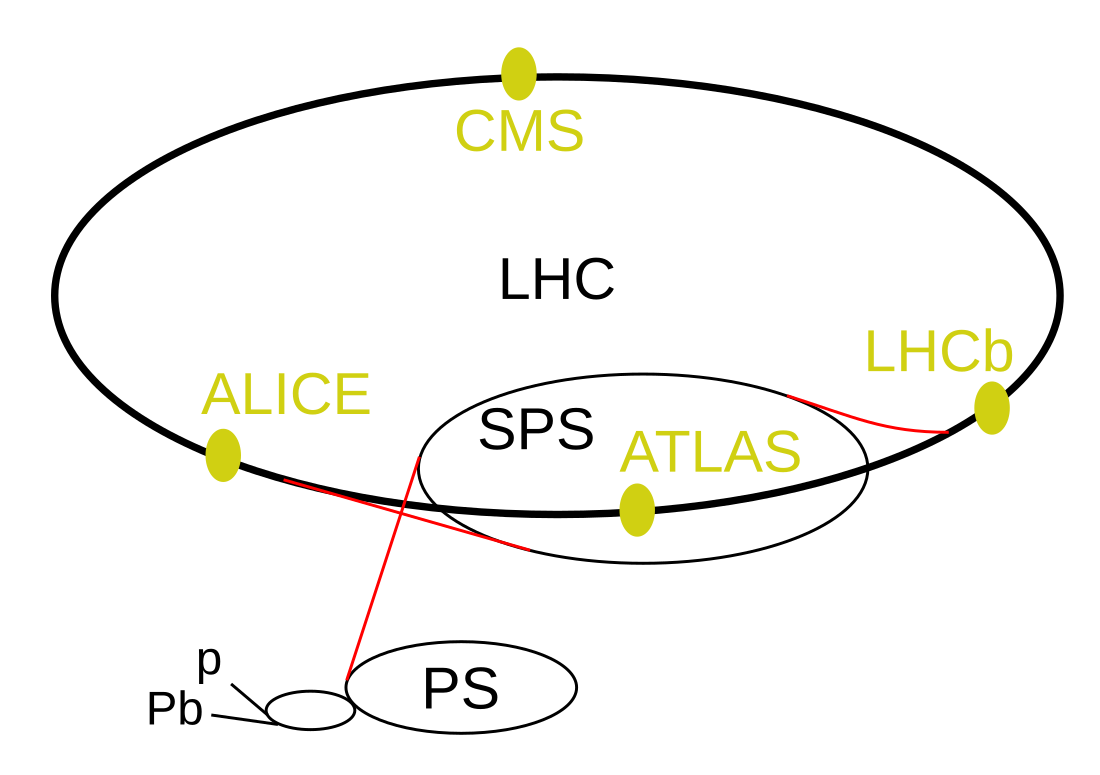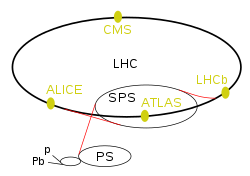Top Qs
Timeline
Chat
Perspective
TOTEM experiment
From Wikipedia, the free encyclopedia
Remove ads
The TOTEM experiment (TOTal Elastic and diffractive cross section Measurement) is one of the nine detector experiments at CERN's Large Hadron Collider. The other eight are: ATLAS, ALICE, CMS, LHCb, LHCf, MoEDAL, FASER and SND@LHC. It shares an interaction point with CMS. The detector aims at measurement of total cross section, elastic scattering, and diffraction processes. The primary instrument of the detector is referred to as a Roman pot. In December 2020, the D0 and TOTEM Collaborations made public the odderon discovery based on a purely data driven approach in a CERN and Fermilab approved preprint that was later published in Physical Review Letters.[1] In this experimental observation, the TOTEM proton-proton data in the region of the diffractive minimum and maximum was extrapolated from 13, 8, 7 and 2.76 TeV to 1.96 TeV and compared this to D0 data at 1.96 TeV in the same t-range giving an odderon significance of 3.4 σ. When combined with TOTEM experimental data at 13 TeV at small scattering angles providing an odderon significance of 3.4 - 4.6 σ, the combination resulted in an odderon significance of at least 5.2 σ.[2]
TOTEM experiment in the LHC tunnel
The roman pot of TOTEM experiment.
Remove ads
See also
References
Further reading
External links
Wikiwand - on
Seamless Wikipedia browsing. On steroids.
Remove ads



